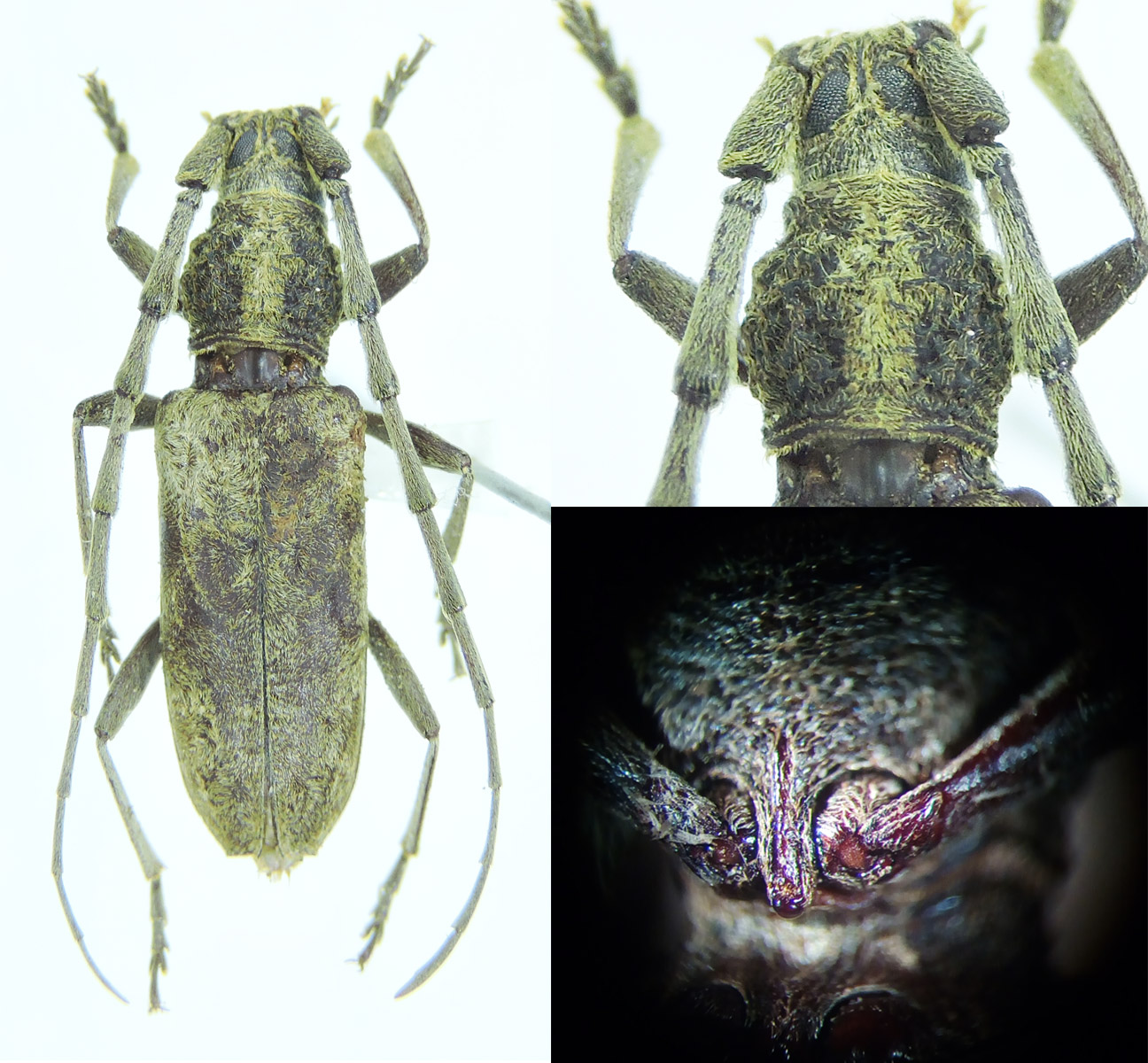| T O P I C R E V I E W |
| sangamesh |
Posted - 18/11/2017 : 14:55:21

407.4 KB
Loc: Karnataka; Size: 19 mm; this seems to go well with specimens posted here in the general resemblance |
| 7 L A T E S T R E P L I E S (Newest First) |
| Xavier |
Posted - 31/07/2018 : 13:51:32
So, it is Diorthus sericeus Gardner, 1939, still called Tapinolachnus sericeus (Gardner, 1939) in Titan database. |
| Xavier |
Posted - 30/07/2018 : 12:31:07
Is it Diorthus sericeus Gardner ?
Holotype is available here. |
| Xavier |
Posted - 19/11/2017 : 09:58:52
Ok; I will try to make a picture of the prosternal process of a female. |
| sangamesh |
Posted - 19/11/2017 : 06:48:50
oops! I should not have jumped on to compare the characters of prosternal process but the pronotal band is different although sculpturing looks same...may be the same species?...any chance of getting prosternal view of the female? |
| Xavier |
Posted - 18/11/2017 : 20:01:11
First, be careful to compare male to male; your specimen should be a female.
I do not see strong differences with my specimens from Laos. |
| sangamesh |
Posted - 18/11/2017 : 19:03:45
The only differing characters that I can find is: in D. laosensis the medial pronotal band is interrupted longitudinally whereas it is not in my specimen; The posteriorly projecting prosternal process is broad at its apex and wrinkled dorsally whereas the prosternal projection in my specimen is bead like apically and bears a longitudinal ridge dorsally...does that justify the separation? |
| Xavier |
Posted - 18/11/2017 : 16:45:55
Yes, same genus sure; but is it the same species ? |


